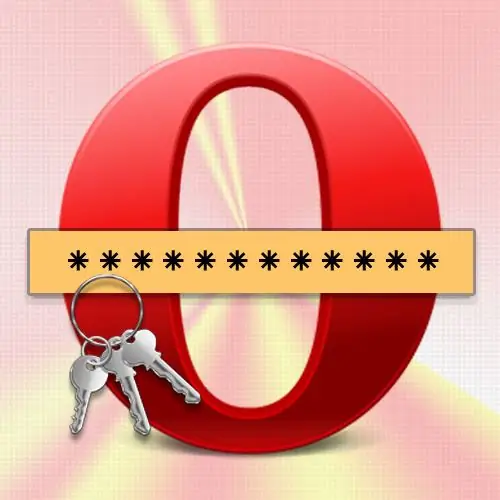A special component, a password manager, is responsible for saving logins and passwords in Opera. By default, it is enabled, but while using the browser, you can accidentally press the deactivation button, which is displayed each time in the save password dialog. There is also a button in this dialog, pressing which prohibits the manager from saving authorization data for one specific site. All these restraining commands can later be canceled and the browser's password-remembering option restored.

Instructions
Step 1
When you send the login and password entered in the authorization form on any site, the password manager displays a narrow additional panel above the page. On the right side of it there are buttons "Save" and "Never", and on the left side there is a proposal to save the entered data. Click "Save" if you want Opera to remember this username and password. In this case, the next time you visit the page, these two fields will be surrounded by an additional yellow frame - by this feature, you can determine whether the password manager has saved data for this authorization form. If instead of the "Save" button you click the "Never" button in the dialog box, then this will disable the password manager.
Step 2
To re-enable the deactivated password manager, open the browser menu and in the "Settings" section, click the "General settings" line - this will give you access to the panel for changing the basic settings of Opera. This can also be done by pressing the shortcut keys CTRL + F12.
Step 3
Go to the Forms tab of the Preferences window. The setting you need is indicated here by the inscription "Enable password management" - check the box next to it. Close the preferences window by clicking the "OK" button, and the password manager will begin its work of tracking the login credentials entered.
Step 4
If you once refused to save the entered data only for one specific site in the password saving dialog, then you must cancel such a ban by removing the corresponding mark in the list of stored passwords. To do this, as in the previous step, open the browser settings window (CTRL + F12) and go to the "Forms" tab.
Step 5
Click the "Passwords" button and find the site name you need in the list of web resources that have ever required authorization. Click the found line and you will see the sub-item placed in it, in which there is no login - click it, and then the "Delete" button. After that, close the list of logins (the "Close" button) and the settings window (the "OK" button). The next time you fill out the authorization form on the page removed from the list, the password manager will again show its standard dialog for saving authorization data.






